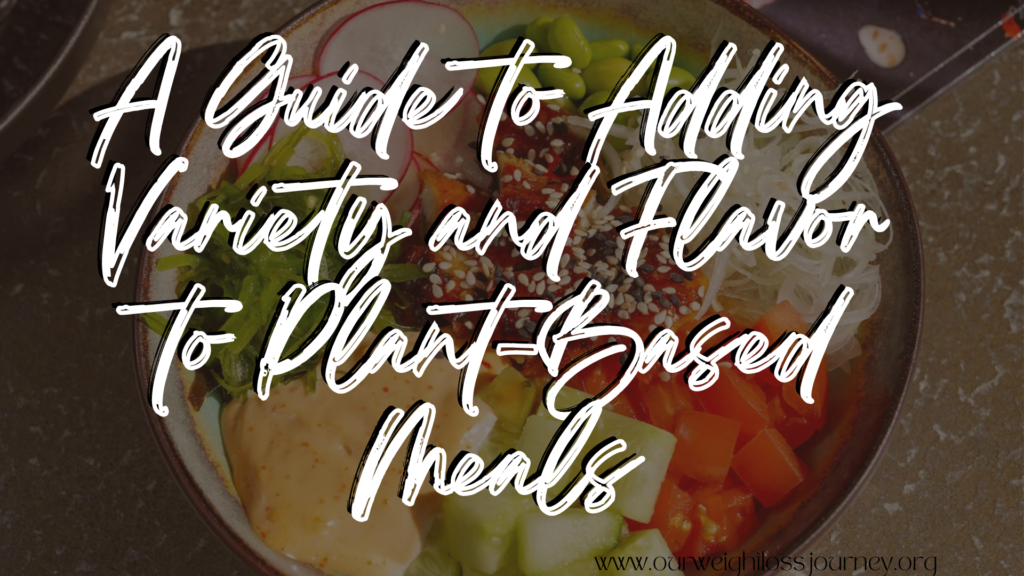If eating healthy and saving money are both on your to-do list, then you’re in for a treat. In this article, we will explore the world of budget-friendly healthy eating, uncovering some clever and effective ways to nourish your body without breaking the bank. From smart shopping strategies to practical meal planning tips, we’ve got you covered. So get ready to discover the secrets of how to eat healthy while keeping your wallet happy.
Creating a Budget
Evaluate your current spending
When it comes to eating healthy on a budget, it’s important to start by evaluating your current spending habits. Take a look at your monthly expenses and see where you can make adjustments. Are there any unnecessary costs that can be cut back? By identifying areas where you may be overspending, you can allocate more funds towards healthy food choices.
Set a weekly or monthly budget
Once you have a clear picture of your current spending, it’s time to set a budget specifically for your meals. Determine how much you can realistically allocate towards groceries each week or month. Having a set amount in mind will help you make smarter choices and avoid impulse purchases that can add up quickly.
Track your expenses
To stay on top of your budget, it’s essential to track your expenses. Keep a record of all your grocery purchases and compare them to your budget. This will help you identify any areas where you may be overspending and allow you to adjust accordingly. By tracking your expenses, you’ll be more mindful of how much you’re spending and make more informed decisions when it comes to grocery shopping.
Meal Planning
Plan your meals in advance
Meal planning is a great way to eat healthy on a budget. Take a few minutes each week to plan out your meals in advance. Consider your schedule, dietary needs, and budget when selecting recipes. By planning ahead, you can avoid last-minute takeout or expensive convenience foods.
Make a shopping list
Once you have your meals planned out, it’s time to make a shopping list. Stick to the ingredients you need for your pre-planned meals to avoid unnecessary purchases. Having a list in hand will also help you stay focused and efficient while shopping, preventing you from wandering aimlessly and potentially overspending.
Stick to your list
While it may be tempting to stray from your shopping list, it’s important to stick to it as closely as possible. Impulse purchases can quickly add up and derail your budget. If you come across an item that is not on your list but catches your eye, ask yourself if it’s really necessary or if it can wait until your next shopping trip.
Shopping Smarter
Buy fresh produce in season
Buying fresh produce in season is not only a smart way to eat healthy, but it can also save you money. Seasonal produce is often more abundant and therefore, more affordable. Plus, fruits and vegetables that are in-season tend to taste better and have higher nutritional value.

Shop at local farmers markets
Another way to save money on fresh produce is by shopping at local farmers markets. Not only will you be supporting local farmers, but you’ll also have the opportunity to find great deals on high-quality fruits and vegetables. Farmers markets often offer lower prices compared to grocery stores, making it an excellent option for budget-conscious shoppers.
Compare prices at different stores
Don’t be afraid to shop around and compare prices at different stores. Prices can vary significantly between grocery chains, so doing some research and checking out a few different options can help you find the best deals. Consider visiting discount stores or ethnic markets, as they often offer competitive prices on a wide variety of food items.
Buying in Bulk
Purchase staple foods in bulk
Buying staple foods in bulk can be an excellent way to save money in the long run. Items like rice, beans, oats, and pasta can often be purchased in larger quantities at a lower price per unit. Not only will buying in bulk save you money, but it will also reduce packaging waste and ensure you always have pantry staples readily available.
Stock up during sales
Keep an eye out for sales and discounts on your favorite healthy food items. When items go on sale, consider stocking up on them to take advantage of the lower prices. Non-perishable items like canned goods or frozen foods can be stored for longer periods, so you can buy them in bulk when they’re on sale.
Consider joining a wholesale club
If your budget allows, joining a wholesale club like Costco or Sam’s Club can be a great way to save money on groceries. These clubs offer a wide range of products at discounted prices, allowing you to buy in bulk and save. However, it’s essential to do the math and make sure the membership fee and the quantity of food you’ll consume justify the cost.
Cooking at Home
Prepare meals in batches
Preparing meals in batches is not only a great time-saver but can also help you save money. By cooking larger portions, you can stretch your ingredients further and have leftovers for future meals. This eliminates the need for expensive takeout or dining out, as you can simply reheat your pre-prepared meals.
Learn cost-effective cooking techniques
Learning cost-effective cooking techniques can help you make the most out of your ingredients. For example, slow cooking or using a pressure cooker can turn inexpensive cuts of meat into tender and flavorful meals. Embrace cooking methods that maximize flavor extraction and minimize waste, such as making homemade stock from vegetable scraps or bones.
Reduce food waste
Reducing food waste should be a priority when eating healthy on a budget. Make an effort to use up ingredients before they spoil by incorporating them into creative recipes or freezing them for later use. Staying organized and utilizing proper storage techniques will also help extend the shelf life of your groceries.
Plant-Based Options
Include more plant-based proteins
Incorporating more plant-based proteins into your diet is not only budget-friendly but also beneficial to your health and the planet. Foods like beans, lentils, tofu, and quinoa are excellent sources of protein and are typically more affordable than animal products. Experiment with plant-based recipes to add variety and reduce your grocery bill.
Grow your own herbs and vegetables
If you have space and time, consider growing your own herbs and vegetables. This allows you to have a fresh and abundant supply of produce without the added cost. Even if you don’t have a garden, herbs can easily be grown in pots or even on your windowsill. Growing your own food is not only cost-effective but also rewarding and environmentally friendly.
Experiment with meat substitutes
Meat substitutes, such as tofu or tempeh, can be a cost-effective alternative to traditional animal protein sources. These plant-based options are often cheaper and offer a similar level of protein and nutritional value. Experiment with different recipes and find ways to incorporate meat substitutes into your meals to save money while still enjoying a delicious and satisfying diet.
Choosing Affordable Protein Sources
Opt for cheaper protein options
When it comes to protein, there are plenty of affordable options to choose from. Eggs, for example, are an excellent source of protein and are often more affordable than meat or poultry. Canned tuna or salmon are also budget-friendly protein sources that can be used in various recipes. Look for affordable cuts of meat or consider buying frozen protein options, as they are often cheaper than fresh cuts.
Buy frozen or canned proteins
Frozen or canned proteins can be a great choice when you’re on a budget. These options are often more affordable than fresh protein sources and have a longer shelf life. Incorporate frozen vegetables into your meals as well to round out your nutritious and budget-friendly meals. Just make sure to check labels for added sodium or preservatives.
Make use of eggs and legumes
Eggs and legumes are incredibly versatile and cost-effective protein sources. They can be incorporated into a wide variety of recipes, from omelets and scrambles to soups and stews. Not only are eggs and legumes relatively inexpensive, but they also provide essential nutrients and are an excellent option for those on a budget.
Eating Seasonally
Take advantage of seasonal produce
Eating seasonally is not only a great way to support local farmers, but it can also save you money. Seasonal produce is typically more abundant, resulting in lower prices. Fruits and vegetables that are in-season also tend to be at their peak flavor and nutritional value. Incorporate seasonal produce into your meal planning to enjoy affordable and delicious meals.
Preserve fruits and vegetables for later
When produce is in abundance and priced low, take the opportunity to preserve it for later use. Freezing or canning fruits and vegetables allows you to enjoy them during the offseason when prices are higher. Preserving food not only saves you money but also reduces food waste and allows you to enjoy your favorite flavors year-round.
Utilize frozen fruits and veggies
Frozen fruits and vegetables are a convenient and budget-friendly option. They are often picked and frozen at their peak freshness, locking in both flavor and nutrients. Frozen produce can be used in smoothies, stir-fries, or as a side dish, providing you with the same health benefits as fresh options without breaking the bank.
Meal Prepping
Prepare meals ahead of time
Meal prepping is a key strategy for eating healthy on a budget. By preparing meals ahead of time, you can save both time and money. Set aside a few hours each week to cook and portion out your meals for the upcoming days. This way, you’ll have healthy and affordable meals ready to go, reducing the temptation to order takeout or purchase convenience foods.
Utilize leftovers for new meals
Don’t let leftovers go to waste! Leftovers can be transformed into delicious new meals and save you money in the process. Get creative and repurpose your leftovers into salads, sandwiches, or stir-fries. By making use of what you already have, you’ll minimize food waste and stretch your food budget further.
Freeze meals for future consumption
If you have a busy schedule or don’t enjoy cooking every day, consider freezing your prepared meals. This way, you can enjoy home-cooked meals even on the busiest days. Invest in quality food storage containers or freezer bags to properly store your meals and ensure they remain fresh and delicious. Freezing meals can save you time, money, and the temptation to order expensive takeaway.
Making Healthy Swaps
Choose whole foods over processed options
When it comes to eating healthy on a budget, focus on choosing whole foods over processed options. Whole foods, such as fruits, vegetables, whole grains, and lean proteins, are often more affordable and provide more nutritional value compared to processed foods. Avoiding packaged and processed snacks or meals can help you save money while nourishing your body.
You may Also Like
Replace expensive ingredients with affordable alternatives
Many expensive ingredients can be easily swapped for more affordable alternatives without compromising taste or nutrition. For example, opt for cheaper cuts of meat or poultry instead of premium cuts, or use canned beans instead of pre-packaged versions. Get creative and experiment with different ingredients to find budget-friendly options that suit your taste and dietary needs.
Limit sugary beverages
A simple and effective way to eat healthy on a budget is to limit your consumption of sugary beverages. Not only are these drinks often expensive, but they also lack nutritional value and can contribute to weight gain. Instead, opt for water, unsweetened tea, or homemade fruit-infused water as a cost-effective and healthier alternative.
By incorporating these strategies into your lifestyle, you can successfully eat healthy on a budget. Remember, with a little planning, smart shopping, and creativity in the kitchen, you can nourish your body without breaking the bank.




